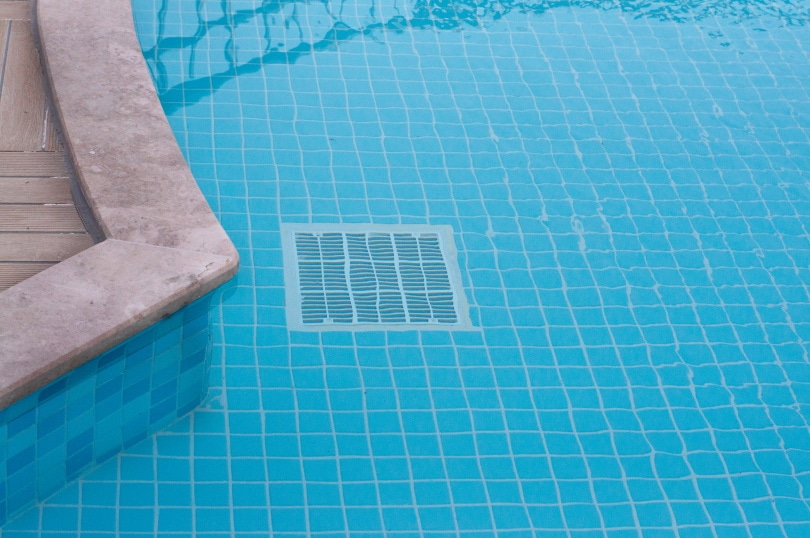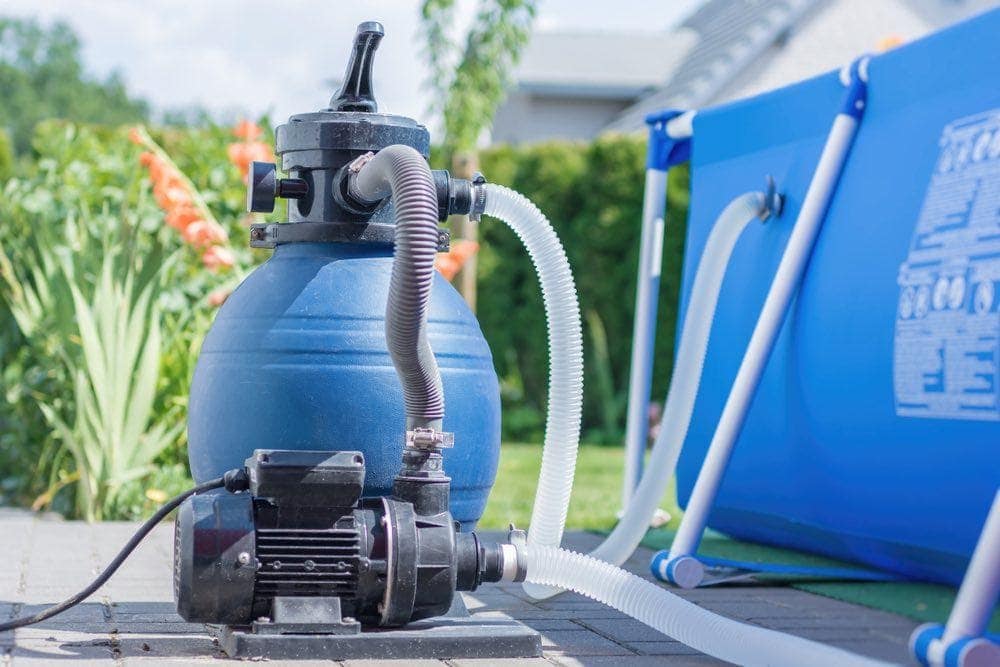How Often Should You Change Sand in a Pool Filter? Maintenance, Costs & FAQ
-
Pete Ortiz
- Last updated:

As anyone who has ever owned a pool can attest, keeping the water clean is a constant battle. Part of the struggle is making sure the filter is in excellent working condition. One common type of filter uses sand to help trap debris and keep it from recirculating back into the pool. While this type of filter is effective, it does require some maintenance. One question that often comes up is, “How often should you change the sand in a pool filter?”
Most experts recommend changing the sand every 3–5 years. However, this depends on a few factors, including the type of pool, the size of the pool, and the amount of use it gets. There have been cases of people changing sand filters after 20 years and still being fairly effective, but it can’t be compared to one done every 5 years.
In this article, we will discuss in detail the frequency of changing sand in the pool filter and answer any questions you may have related to the topic.
What Is a Sand Filter?
A sand filter is a type of water filtration system that uses sand to trap and remove debris and impurities. Sand filters are typically used in swimming pools and other types of recreational water, such as hot tubs and spas.
Do not confuse the sand in a pool filter with the sand you get on a beach or in children’s play areas. This is a different kind of sand with larger particles, mostly made up of either zeolite, mesh crystals, or silica. For the tank holding the sand, the casing is mostly made up of stainless steel, fiberglass, or durable plastic, which can withstand high pressure from the pool.

How Does a Pool Sand Filter Work?
Water is moved from the top of the tank to the bottom with the help of sand filters through high pressure. As water goes through the tank, the sand’s sharp edges catch particles and debris. Through continuous cycling of the water through the tank, smaller and smaller particles are trapped, resulting in a cleaner and clearer tank.
To better understand this, pool water will enter through the top of the tank, where filtering begins. Water can also enter the tank from the bottom but will still need to be pumped to the top first before the filtration process begins.
When the top of the tank fills up, the water is then passed through a distributor, which ensures the water spreads evenly through the sand bed. As the water washes through, impurities are left behind, and the cleaned water flows towards the lateral openings located at the bottom of the tank. These openings are large enough for the water to pass through but small enough to prevent sand from going through.
After this, the backwash process occurs where the water will come out of the laterals at the bottom and travel up the tank through the sand and back to the pool.
Sand Filter Maintenance
It is not too hard to maintain your sand filter, but you will still need to check it regularly to ensure everything is working properly.
As previously stated, you can change the sand after 3–5 years of use. However, pool owners who use Baquacil filter cleaner may need to replace the sand annually as it will usually coagulate the waste in the tank.
In certain instances, sand may develop clumps which can be corrected by soaking the sand in a filter cleaner to remove them.

How Much Does It Cost to Replace the Sand?
It will run you between $300–$1,000 to replace the entire sand filter. For in-ground pool sand filters, it will cost you anywhere between $450–$1,200. Above-ground pools are generally cheaper, but the price of replacing the sand filter will be influenced by the size of the tank.
The sand costs around $25 for a 50-pound bag, with around 350 pounds of sand for the average-sized in-ground pool filter.
- Before you embark on replacing new sand in the sand filter tank, the first thing will be to get the right equipment for the job. This may include a replacement O-ring valve, Teflon tape, and some unions
- Next, turn the power off, which will include the pump and the circuit breaker
- Turn the filter’s cap counterclockwise to let out the air from the filter tank and then drain the water. You may collect the water somewhere else or let it drain out.
- Disconnect the pump and hoses fitted to the multiport valve at the top of the filter tank. Remove the valve of the pipe by removing the port attachments and unscrewing the bolts separating the clamp. Pull on the valve to remove it.
- After the valve is free from the filter tank, tape the end of the pipe to prevent sand from getting in and clogging the laterals. Proceed to remove all the sand from the filter tank until you see the bottom of the tank.
- Smoothly pull the lateral assembly and pipe out and inspect the laterals for any damage. This is where you replace it if it’s broken, since returning it to the filter tank damaged may negatively impact the filtering process.
- Fill the tank about halfway with water to protect the laterals from clogging once you add the new sand.
- Replace the lateral assembly and the pipe as they were.
- Add in the fresh sand according to the manufacturer’s recommended levels. As you add the sand, ensure you level it for effective water circulation and filtration.
- You may choose to replace the O-ring at the bottom of the filter tank because the next time you clean the tank will be after a couple of years.
- Remove the tape you initially placed on the multiport and set back the control valve in its original position
- Rotate the valve handle to the backwash setting and turn on the pump. After it is fully primed, run the pool for a little bit to flush out any impurities and finer sand particles from the water.
How to Tell If Pool Filter Sand Needs to Be Replaced
Sometimes, you may not keep track of the changing intervals of the sand filter. In this case, you will need to watch out for certain signs to know if the sand needs to be replaced. Some of these signs include:
A Cloudy Pool
If you have cleaned the pool and added chemicals but it still looks cloudy, then you may be staring at an old sand problem. However, there might be plenty of other reasons for the pool remaining cloudy, including the wrong combination of chemicals or leaf mold.
Still, track how long the sand has been in use to predetermine if it may be the problem.
Shorter Backwashing Sessions
If you notice the pool filter getting greasy quicker than normal and requiring you to replace it faster, then you might have a sand problem within the filter. Again, check how long you have used the sand to see if its lifespan has elapsed.
Channeling
Channeling happens when the water creates its path through the sand without having been filtered. In worst-case scenarios, water will go through either edge of the sand filter tank and avoid the sand, which will result in a dirty pool.
Several reasons may cause this, but old sand may be one of the causes.

Is It Possible to Change Pool Sand Too often?
Although you have the recommended time that the sand should last before replacement, nothing is holding you back from changing it as often as you wish. However, is it recommended?
Every time you change the sand in the sand filter, you will face certain risks, which may pose a threat to the stature of your sand filter tank. Here are some of the risks to beware of:
Breaking the Standpipe
The standpipe is the vertical pipe inside the filter that moves water from between the laterals and the inlet and outlet of the filter. If not properly handled during a sand change, it can get damaged and become less efficient.
Tampering With Multiport Valves or Seals
The multiport valves are another vulnerable aspect of the sand valve tank, and the more times you change the sand, the more the risk posed to these parts.
Breaking Laterals
Laterals are attached to the central pipe and come with sieve-like holes to allow water to travel through the filter and sand. As they age and are occasionally opened for sand replacement, they will become delicate and brittle. Damaged laterals will result in a compromised tank that will not work effectively to clean the pool.

Sand Leak
One of the things that can happen while changing the sand is having sand leak into the pool. This can be brought on by broken pipes or laterals. These parts are quite easy to damage and may not even be seen until it is too late.
The less you change the sand, the more you reduce the chances of wear and tear.
In Conclusion
Although you will inevitably have to change the sand in your pool filter, there is an ideal time to do it. Ideally, change the sand in your filter after 3–5 years of use unless you notice issues like cloudiness in the pool, which may warrant you to replace it sooner. Otherwise, you will also prevent unwanted wear and tear on the sand filter tank.
Featured Image Credit: oneSHUTTER oneMEMORY, Shutterstock
Contents


